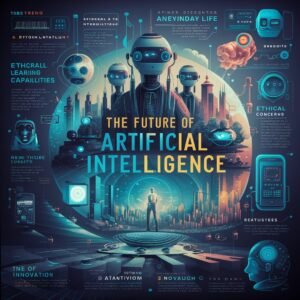In today’s technology-driven world, the term “machine learning” is frequently mentioned in discussions surrounding artificial intelligence (AI) and its potential impact on various industries. But what exactly is machine learning, and how does it work? In this article, we’ll provide a layman’s overview of machine learning, breaking down complex concepts into simple terms and exploring its real-world applications.
What is Machine Learning?
At its core, machine learning is a subset of artificial intelligence that enables computers to learn from data and make predictions or decisions without being explicitly programmed. In traditional programming, developers write code to perform specific tasks or solve particular problems. In contrast, in machine learning, algorithms are trained on large datasets to identify patterns and relationships within the data, allowing the computer to learn from examples and generalize to new, unseen data.
How Does Machine Learning Work?
Machine learning algorithms learn from data through a process called training. During training, the algorithm is fed with input data (features) and corresponding labels or outcomes. The algorithm iteratively adjusts its internal parameters to minimize the difference between its predictions and the actual labels, a process known as optimization or model fitting. Once trained, the model can make predictions or decisions on new, unseen data based on the patterns it learned during training.
Types of Machine Learning
- Supervised Learning: In supervised learning, the algorithm learns from labeled data, where each example is associated with a known outcome or target variable. The goal is to learn a mapping from input features to output labels, such as classifying emails as spam or not spam, or predicting house prices based on features like location, size, and number of bedrooms.
- Unsupervised Learning: In unsupervised learning, the algorithm learns from unlabeled data, where the goal is to discover hidden patterns or structures within the data. Examples include clustering similar documents, segmenting customers based on purchasing behavior, or reducing the dimensionality of high-dimensional data.
- Reinforcement Learning: In reinforcement learning, the algorithm learns through trial and error by interacting with an environment and receiving feedback in the form of rewards or penalties. The goal is to learn a policy that maximizes the cumulative reward over time, such as training a robot to navigate a maze or playing games like chess or Go.
Real-World Applications of Machine Learning
Machine learning has numerous real-world applications across various industries, including:
- Healthcare: Diagnosing diseases, predicting patient outcomes, and personalizing treatment plans.
- Finance: Fraud detection, credit scoring, algorithmic trading, and risk management.
- E-commerce: Recommender systems, personalized marketing, and dynamic pricing.
- Autonomous Vehicles: Object detection, path planning, and behavior prediction.
- Natural Language Processing (NLP): Language translation, sentiment analysis, and chatbots.
Conclusion
In conclusion, machine learning is a powerful technology that enables computers to learn from data and make predictions or decisions without explicit programming. By leveraging algorithms and techniques from supervised, unsupervised, and reinforcement learning, machine learning has revolutionized various industries and continues to drive innovation and transformation across the globe. Understanding the basic principles of machine learning empowers individuals and organizations to harness its potential and unlock new possibilities for solving complex problems and creating value in the digital age.






